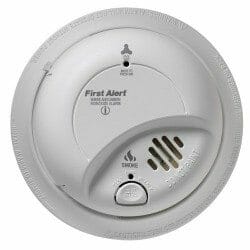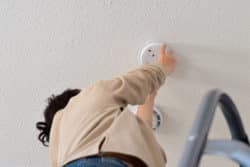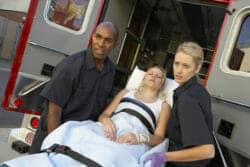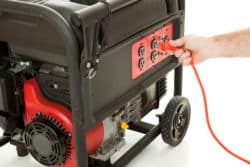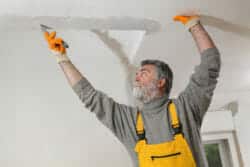Warning Signs of Carbon Monoxide Poisoning in Dogs and Cats
Home » Interior » Alarms: Smoke & CO »
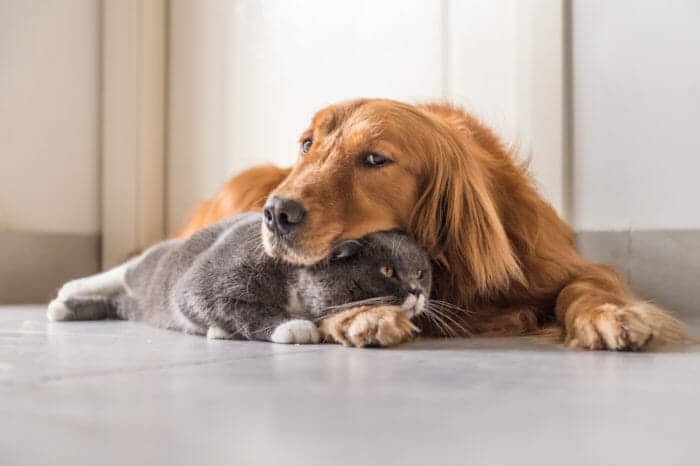
Symptoms of carbon monoxide poisoning in dogs and cats
Pets, like humans, are susceptible to carbon monoxide poisoning. Unfortunately, they can’t tell you that they have CO poisoning or do anything about it, therefore it’s key that you recognize the symptoms.
Like humans, when carbon monoxide enters their bloodstream, it replaces the oxygen in the red blood cells with carbon monoxide, which prevents oxygen from reaching their tissues and organs. This can cause serious tissue and organ damage and even lead to death.
4 Common places pets are exposed to CO poisoning
The house
Carbon monoxide in a home comes from many sources: the basic ones are gas water heaters, gas furnaces and wall heaters, gas stoves and ovens, gas laundry dryers and house heating stoves; including wood and gas fireplaces. When any of these are malfunctioning or have venting problems, they may create or release carbon monoxide into the home’s air. (CO Safety checklist and hidden places to look)
Pets often spend more time in the house than their owners, therefore, some pets may be more at risk than their owners. Interestingly, since many spend more time at home, they may exhibit signs of CO poisoning before the people who live in the house.
The garage
Pets that are left in a car with the engine running, especially in the winter, can be exposed to high levels of CO in just a few minutes. This can be deadly for both children and pets.
In a house fire
If there has been a house fire and your pet was exposed to the smoke from the burning fire, then the pet most likely was exposed to carbon monoxide poisoning, possibly high concentrations of it.
When doing construction or remodeling
Should there be construction and remodeling in the house and a gas generator is being used in enclosed areas, then it is producing CO in the enclosed area. Homeowners should avoid running a gas-powered generator in their house for it’s very dangerous.
Symptoms that your pet is suffering from CO poisoning

Lethargic or listless
If your pet has lower energy than normal, appears listless and doesn’t jump about or run around as would be normal for them, then it’s a pretty good guess that something is wrong. One of the reasons could be CO poisoning, however, it may take a qualified vet to diagnose what the problem is.
Sleepiness or drowsiness
If pets are more tired than normal or showing signs of drowsiness, then it may be a warning sign, especially when they haven’t been doing anything strenuous, running about or busy entertaining people or kids.
More energy outdoors
If your dog has low energy when in the house, but you notice that when you take him outside, his energy level picks up significantly, or if he is hesitant to come back inside, then it may be a yellow flag that there is CO present in the home.
Loss of co-ordination, wobbly, dizzy
If your cat or dog is unsteady, appears uncoordinated or wobbly more than normal, then this may be a “Red Flag” that something is wrong. One of the reasons may be CO poisoning.
Vomiting
Like humans, vomiting may be a symptom, especially if your pet appears weak or lethargic after vomiting. If you suspicion CO poisoning, get the pet out of any confined space that they may be in; get them outside to fresh air.
Bright red skin or gums
If a pet has cherry red or deep red gums or nostrils, or flushed skin color, it may be because of carbon monoxide. If it is carbon monoxide, then the concentration level in the blood will most likely be high and quite serious.
Difficulty breathing
When a pet is having a problem breathing and there is not a clear reason or cause, then it should be considered serious and action needs to be taken; regardless of the cause. Difficulty breathing is one of the clinical signs of CO poisoning.
Seizures
If a pet is having seizures, it can be a sign of carbon monoxide poisoning, for the brain may not be getting sufficient oxygen. This should be considered serious and medical attention obtained quickly.
Loss of consciousness due to carbon monoxide
This can be extremely serious, because the CO level is usually extremely high when this occurs, and vets recommend that you get the pet in for emergency treatment immediately.
Veterinarians
When your pet has warning signs that something is not right, veterinaries recommend that you bring your pet in for an evaluation without delay. Remember, if you’re aware of any potential carbon monoxide issues, that you should tell the vet immediately.
Be prepared
Knowing the name of your veterinarian, his phone number and the location of his office can save valuable time in getting your pet emergency care. Having a back-up vet may be wise as well.
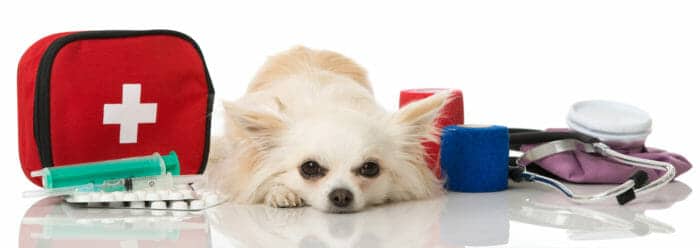
Many veterinarians recommend that pet owners have a pet emergency kit in their home and in their vehicle; this is in addition to having a safe home for your pet.
Warnings about power outages, storms, and loss of heat
A number of carbon monoxide poisoning cases occur during the winter months and during power outages. When the power goes out, people often turn to gas-powered generators for a source of power; however, in the excitement of the outage, they often forget about the risk of carbon monoxide coming from their generator. This can be a deadly mistake.
Another risk occurs when a home loses heat because of a storm or other events. When this occurs, some families may get their heat from a fireplace, wood-burning stove or by turning on their kitchen gas stove or oven to heat their house. In these conditions, extra caution should be taken when using wood and gas stoves or fireplaces and especially when using the kitchen stove or oven to heat the house, for this can be very dangerous.

Carbon monoxide is colorless, odorless, tasteless and can be deadly for pets as well as for yourself. Knowing the warning signs that your pet may be suffering from CO poisoning may save your pet’s life: also, you should know the symptoms that you may have carbon monoxide poisoning, for that may save your life. (Learn the 11 symptoms you have carbon monoxide poisoning)
Since pets can’t call for help or get out of the house on their own, it is imperative that you have a safe house. Just having CO alarms will not always provide the safety that they need; therefore, doing a safety check as a preventive measure is wise and if you want to go up another level of preparedness, have a monitored CO system or one that will notify you of a CO alarm going off.
